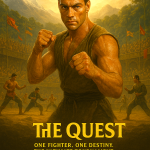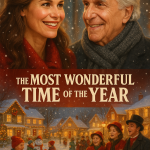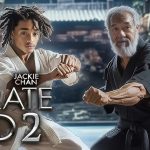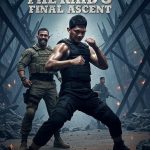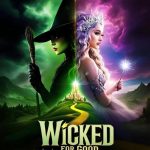Enter the Dragon (1973) – The Iconic Martial Arts Masterpiece
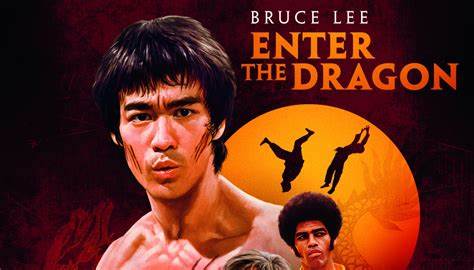
Enter the Dragon (1973) – The Iconic Martial Arts Masterpiece
Enter the Dragon, released on August 17, 1973, stands as a monumental achievement in the history of cinema, a film that not only redefined the martial arts genre but also solidified Bruce Lee’s status as an unparalleled legend in both martial arts and action filmmaking. Directed by Robert Clouse and produced by Warner Bros. in collaboration with Golden Harvest, this film transcended its genre to become a global cultural phenomenon. Its blend of breathtaking fight choreography, compelling storytelling, and a charismatic lead performance by Bruce Lee revolutionized action cinema, setting a benchmark that remains influential more than five decades later. Beyond its surface-level appeal as an action flick, Enter the Dragon is a testament to the power of cinema to bridge cultures, showcase artistry, and leave an indelible mark on popular culture.
The plot of Enter the Dragon is deceptively simple yet masterfully executed, combining elements of espionage, martial arts, and crime drama into a cohesive and thrilling narrative. Bruce Lee plays a character named Lee, a highly skilled martial artist and Shaolin monk recruited by British intelligence to infiltrate a remote island fortress owned by the sinister Han (Shih Kien). Han, a former Shaolin student turned criminal mastermind, operates a secretive martial arts tournament as a front for his illicit enterprises, which include drug trafficking, human enslavement, and the recruitment of an army of enforcers. Lee’s mission is to enter the tournament, gather evidence of Han’s crimes, and bring his operation to justice. From the opening scene, where Lee demonstrates his prowess in a sparring match at a Shaolin temple, to the climactic showdown in Han’s mirrored lair, the film weaves together action, suspense, and intrigue with seamless precision.
What truly distinguishes Enter the Dragon from its contemporaries is Bruce Lee’s electrifying presence. At the time of the film’s release, Lee was already a rising star in Hong Kong cinema, having starred in hits like The Big Boss (1971) and Fist of Fury (1972). However, Enter the Dragon marked his first major Hollywood production, and he seized the opportunity to showcase his extraordinary talents to a global audience. Lee’s physicality is nothing short of mesmerizing—his movements are a blend of speed, power, and grace, reflecting years of training in Wing Chun, boxing, and his own martial arts philosophy, Jeet Kune Do. Every punch, kick, and stance exudes authenticity and intensity, a stark contrast to the often-stylized or exaggerated combat seen in earlier action films. His ability to convey emotion through physical performance—whether it’s the quiet confidence of a monk or the ferocity of a warrior—elevates the film beyond mere spectacle.
The fight scenes, choreographed by Lee himself, are the heart of Enter the Dragon. Each sequence is meticulously crafted, showcasing not only his technical skill but also his understanding of cinematic storytelling. One standout moment occurs early in the film when Lee confronts Han’s bodyguard, Oharra (Bob Wall), in the tournament. The fight is a masterclass in pacing and escalation, beginning with a tense exchange of blows and culminating in Lee’s iconic double-kick that shatters Oharra’s resolve—and a pair of bottles he’s holding for dramatic effect. Another unforgettable sequence is Lee’s battle against a horde of Han’s henchmen in an underground lair, where he wields nunchaku with devastating precision. This scene, in particular, has become a cultural touchstone, endlessly imitated and parodied in films, TV shows, and even video games. Yet, it’s the climactic confrontation with Han that cements the film’s legacy. Set in a disorienting hall of mirrors, the duel is a visual and thematic triumph, blending raw combat with a psychological battle as Lee shatters illusions—both literal and metaphorical—to defeat his foe.

Beyond Bruce Lee’s brilliance, Enter the Dragon benefits from a strong supporting cast that adds depth and variety to the story. John Saxon plays Roper, a slick, gambling-addicted martial artist who enters Han’s tournament to escape his debts. Saxon’s charm and understated fighting style provide a counterpoint to Lee’s intensity, grounding the film with a relatable, everyman quality. Jim Kelly, meanwhile, brings a different energy as Williams, a confident African-American martial artist with a sharp sense of justice and a funky, streetwise swagger. Kelly’s performance, infused with charisma and a touch of defiance, reflects the era’s Blaxploitation influences and adds a layer of social commentary to the film. Together, Lee, Roper, and Williams form an unlikely trio, their interactions ranging from camaraderie to rivalry as they navigate the tournament’s dangers. The ensemble is rounded out by memorable secondary characters, such as Angela Mao as Su Lin, Lee’s sister, whose brief but powerful flashback scene showcases her own martial prowess and sets up a personal stake in Lee’s mission.
Director Robert Clouse deserves immense credit for harnessing these talents into a cohesive vision. While not a martial arts expert himself, Clouse collaborated closely with Lee to ensure the film’s action sequences were authentic and visually striking. His direction balances the high-octane fights with quieter moments of tension and character development, allowing the audience to connect with the protagonists before the chaos unfolds. The tournament setting serves as an ingenious narrative device, providing a natural structure for the escalating conflicts while introducing a rogues’ gallery of opponents—each with their own distinct fighting styles. Clouse’s use of wide shots and dynamic camera angles enhances the choreography, capturing the fluidity and power of every movement. The film’s production design, particularly Han’s opulent yet sinister island fortress, adds an exotic, almost surreal atmosphere that heightens the stakes.
The soundtrack, composed by Lalo Schifrin, is another key element that elevates Enter the Dragon to masterpiece status. Schifrin, known for his work on Mission: Impossible and Dirty Harry, blends Eastern and Western musical influences into a score that pulses with energy and menace. The main theme, with its haunting flute melodies and driving percussion, perfectly captures the film’s fusion of mysticism and modernity. During the action scenes, the music swells to match the rhythm of the fights, amplifying their intensity without overpowering the sound of flesh striking flesh or Lee’s iconic battle cries. It’s a score that lingers in the mind long after the credits roll, reinforcing the film’s status as a sensory experience.
Enter the Dragon is more than just a martial arts film—it’s a cultural bridge that introduced Western audiences to the depth and philosophy of Eastern combat traditions. At a time when Hollywood largely ignored Asian talent, Bruce Lee broke barriers as both a star and a creative force, co-writing the script and shaping the film’s themes. His character embodies the Shaolin ideals of discipline, honor, and self-mastery, offering a counterpoint to the chaos and corruption of Han’s world. Lee’s famous line, “Don’t think, feel,” spoken during a lesson to a young student, encapsulates his martial arts philosophy and resonates as a universal call to intuition and action. This blend of physical prowess and intellectual depth made Lee a transcendent figure, appealing to audiences across racial, cultural, and geographic lines.
The film’s impact on cinema and pop culture cannot be overstated. It grossed over $350 million worldwide (adjusted for inflation), a staggering success for a modest $850,000 budget, and it sparked a global martial arts craze. Studios rushed to produce their own kung fu films, while stars like Chuck Norris, Jackie Chan, and Jean-Claude Van Damme emerged in Lee’s wake, each citing Enter the Dragon as an inspiration. The movie’s influence extends to other genres as well—its tournament structure has been echoed in everything from Mortal Kombat to The Hunger Games, while its mirrored showdown inspired countless homages, including a famous scene in John Wick: Chapter 4. Beyond cinema, Lee’s image—shirtless, nunchaku in hand, mid-fight—became an enduring symbol of strength and rebellion, adorning posters, T-shirts, and even album covers.
Tragically, Bruce Lee did not live to see the full extent of Enter the Dragon’s success. He passed away on July 20, 1973, just weeks before the film’s premiere, at the age of 32. His untimely death added a layer of mystique to his legend, transforming Enter the Dragon into both a triumph and a bittersweet farewell. For many fans, the film is a celebration of what Lee achieved in his short career—and a poignant reminder of what might have been.
In conclusion, Enter the Dragon is a cinematic tour de force that combines jaw-dropping action, compelling characters, and a groundbreaking cultural legacy. It’s a film that entertains on every level—visually, emotionally, and philosophically—while standing as a testament to Bruce Lee’s genius. Whether you’re a martial arts enthusiast, a cinephile, or simply a lover of great storytelling, Enter the Dragon remains an essential watch. Its influence endures in the countless films, games, and artworks it inspired, ensuring that Bruce Lee’s dragon will continue to roar for generations to come.
#EnterTheDragon #BruceLee #MartialArtsMasterpiece #ActionClassic #KungFu #BruceLeeLegacy #MartialArtsFilm #FightChoreography #1973Classic #CulturalIcon #RobertClouse #ActionMovieLegend

